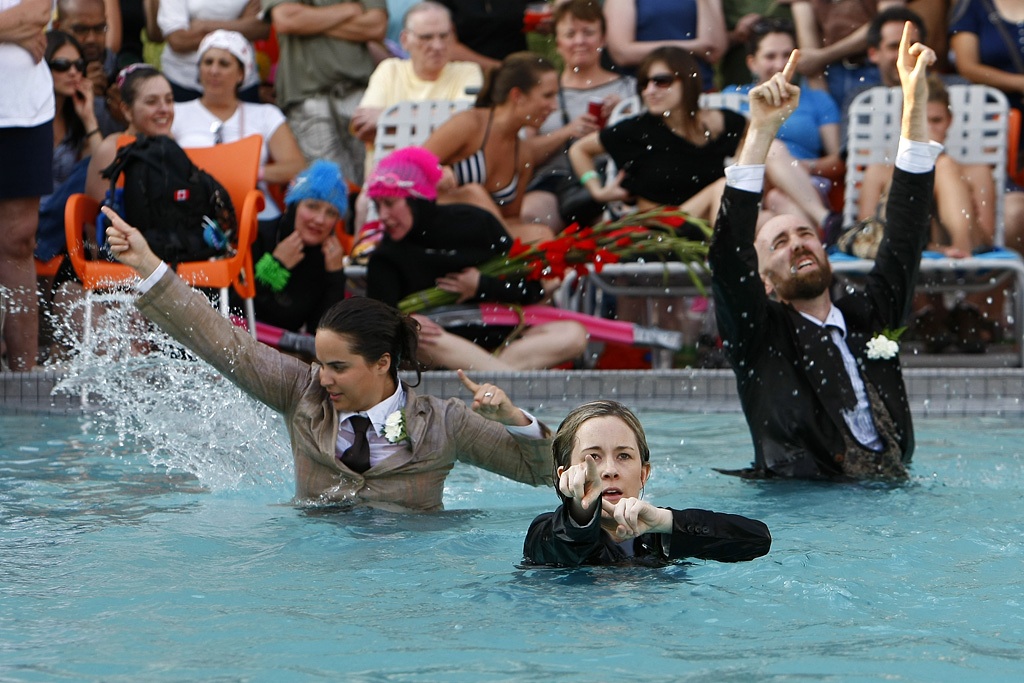
We Are Science perform at the WPA SynchroSwim, 2009. Photo: Max Cook.
I met Lisa Gold, the executive director of Washington Project for the Arts (WPA), during the (e)merge Art Fair in Washington, D.C. last year and was instantly struck by her enthusiasm and dedication to the arts. Bright, savvy and energetic, she is an innovative arts administrator with great ideas for helping artists succeed and a knack for making things happen. Having worked at Socrates Sculpture Park, apexart, The Drawing Center and now WPA, Lisa has over twenty years of experience in arts management, development, programming, outreach and public relations. One of her first WPA projects upon arriving in 2009 was to produce an art event at the Capitol Skyline Hotel which became, under her direction, a day of performance art utilizing the pool for a synchronized swimming competition. She followed the smash success of this event by implementing new programs at WPA such as the Public Art Residency at Socrates and InfoEx (events with visiting international curators from ISCP).
Lisa somehow found time to chat with me during a recent frenzied week as WPA prepared for its upcoming annual gala/silent auction, which included installing and opening the "SELECT" exhibition.
(Note: The following is a short excerpt from the full interview, which is available at www.juliechaeprojects.com under the Writings tab.)
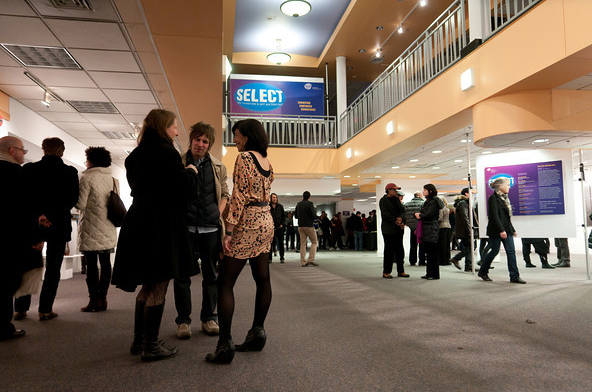
Cynthia Connolly, Ryan Holladay, Lisa Gold at "SELECT" opening reception, 2012. Photo: Vincent Gallegos.
JC: Hi Lisa! You've been working in the arts for twenty years now. How did it all begin?
LG: I was always involved in the arts. My mother was a painter and I was born with a love of the visual arts. I was voted "Most Artistic" in high school, but I thought I would die starving on the street if I tried to make a living as an artist. So I went to business school and into the advertising field -- a left brain/right brain compromise that paid the bills and allowed me to be in a creative environment.
I did all sorts of art-related volunteer projects on the side and continued to take studio classes. It never occurred to me to go into arts administration!
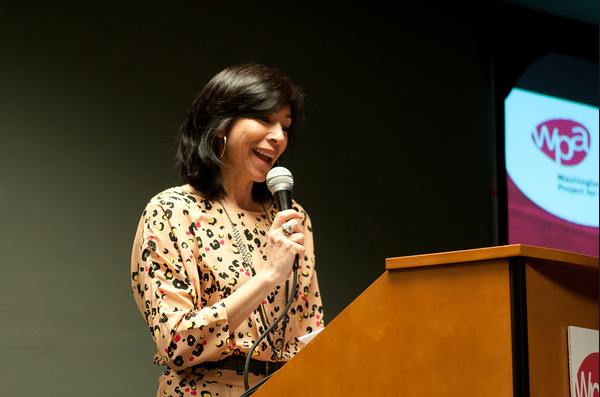
Lisa Gold introduces Alice Denney Award recipient Molly Ruppert at "SELECT" opening reception, 2012. Photo: Vincent Gallegos.
JC: You must have enjoyed your volunteering, as you were soon starting your first full-time job at a major arts organization.
LG: I started officially at apexart. Steven Rand took a chance on me. I will always be incredibly grateful to him. I was mostly writing grants, trying to identify individual funders.
JC: Obviously you were successful, since you followed up apexart with work at several other highly-regarded contemporary arts organizations. Do you have any special memories from some of these other jobs?
LG: I loved all of them! Yes, when you're working with artists, you are always surprised, amazed and challenged.
Working at Socrates was an extraordinary experience.
JC: What was it like, working at Socrates Sculpture Park?
LG: The office was located in the truck repair building across the street. Some days the fumes were unbearable. But it was better than when Kathleen Gilrain started in 1995 and they'd worked out of a trailer. We at least had real toilets instead of having to use a port-a-potty!
But it was exciting. We worked with a lot of emerging artists so you saw a lot of people facing enormous challenges.
I think Socrates gave me a new respect for the fearlessness of artists and helped form my ideas about the need to support artists today.
JC: When did you start working at WPA?
LG: I started in 2009. At the time, I was really excited about coming to Washington. Things were really depressing in New York. Bear Stearns had collapsed. Lehman Brothers was about to tank. The climate was terrible.
JC: That time is still fresh in my mind. So many New Yorkers were losing their jobs.
LG: And Washington seemed so hopeful. All of these people with new ideas about changing the world were coming to Washington. I was so inspired, and with WPA, it was an INCREDIBLE opportunity to run such a storied and prestigious organization. I was just so honored to be considered for the job. I took it on full force.

WPA Founder Alice Denney and Lisa Gold at the opening of "Catalyst, 35 years of Washington Project for the Arts," 2010, American University Museum. Photo: Greg Staley.
JC: How does the WPA work?
LG: WPA is both an artist service and a presenting organization. We have members (about 800 of them) and anyone can join. We offer a lot of professional development programs and services for artists in the form of workshops, the ArtFile Online (our online registry), curator meetings and talks. We also are a presenting organization and we organize group exhibitions a few times a year as well as smaller artist projects in our space.
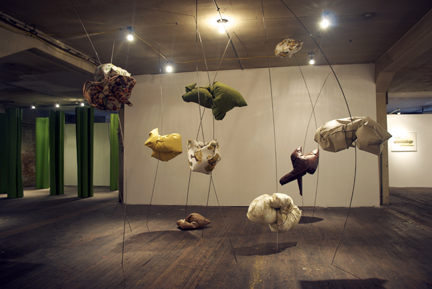
"Options 2011" installation view, 2011. Curated by Stefanie Fedor, Executive Director of Arlington Arts Center. (Works left to right by: Artemis Herber, Stewart Watson, Amy Chan). Photo: Alexandra Silverthorne.
LG: There are so many ways to support artists -- grants, studio space, programs, exhibitions, etc. We try to do a lot of things, but I like to help artists develop the skills they need to succeed and put them in contact with people who can help, advise, etc.
JC: I think your focus on helping artists develop the skills & contacts they need for success makes WPA more unique. You provide artists with curatorial lab-like opportunities to experiment with their work and present it to the public.
LG: The Coup d'Espace program really is a laboratory. It was conceived to bring artists into the space and give them free reign. There are so few venues for artists to present their work, but there are even fewer for them to experiment publicly, to take risks and have the support of an organization or institution behind them. I wanted to offer artists that opportunity to try out new ideas, to give them a little nudge, to allow them to experiment and even fail. Some of the projects have been incredible. All of them, I think, were learning experiences for the artists. And they will take that experience when they go on to present a project in a larger space or refine the idea for a new audience.
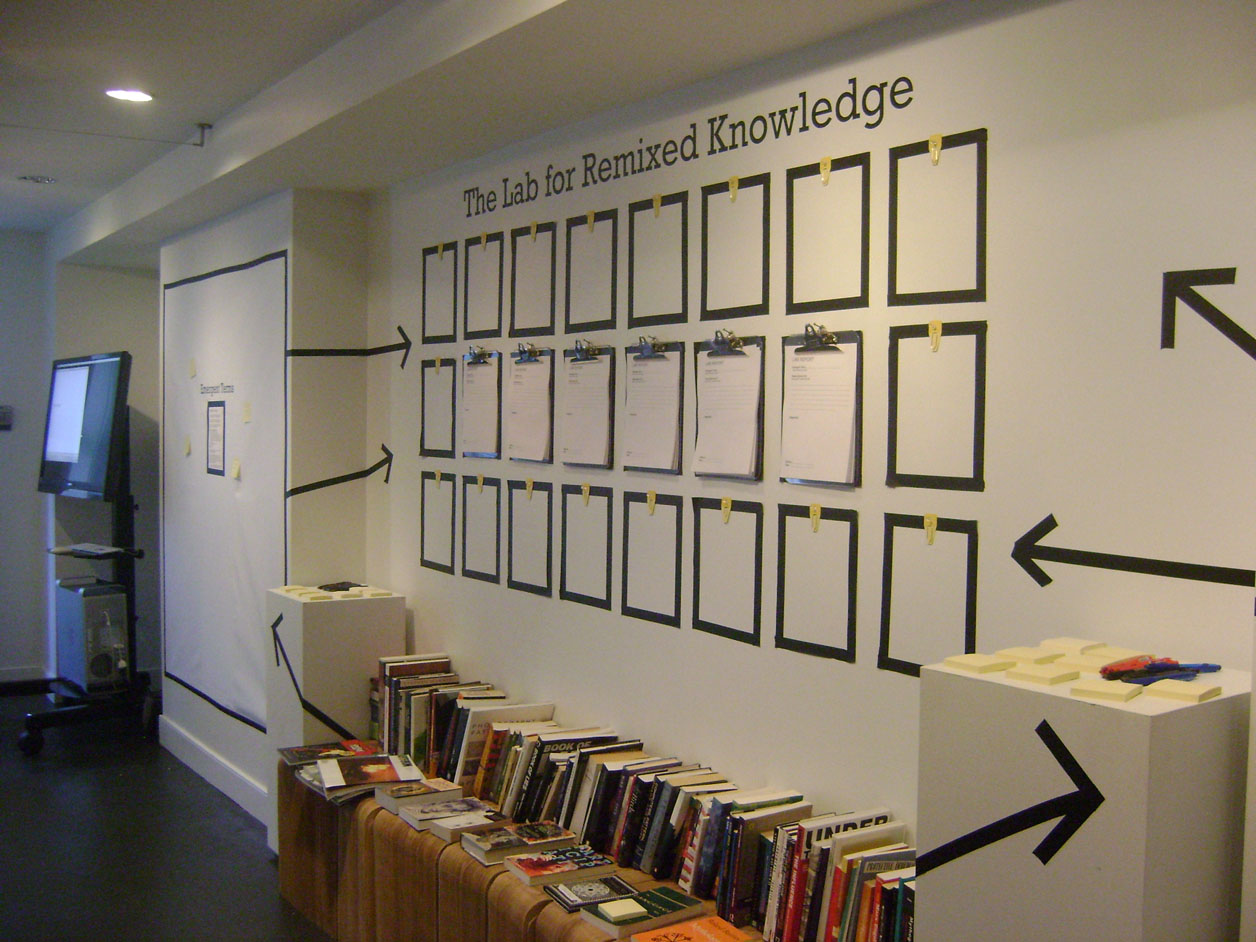
Adam Good's Lab for Remixed Knowledge, 2010. Courtesy of WPA.
JC: In addition to programs that allow artists to experiment and create, you bring in terrific, smart curators who contextualize art in terms of current, timely themes of artistic inquiry, and help frame how the public "sees" and thinks about art.
LG: There are so many smart and talented curators in DC and other places who are willing to work with us. I think it helps our artists to work with them, to give them a new perspective. For instance, we've brought in curators and speakers from New York who have something to offer the artists here, such as curators Regine Basha (recently appointed as Executive Director of Artpace San Antonio) and Sara Reisman (Director of NYC Cultural Affairs Department's Percent for Art Program).
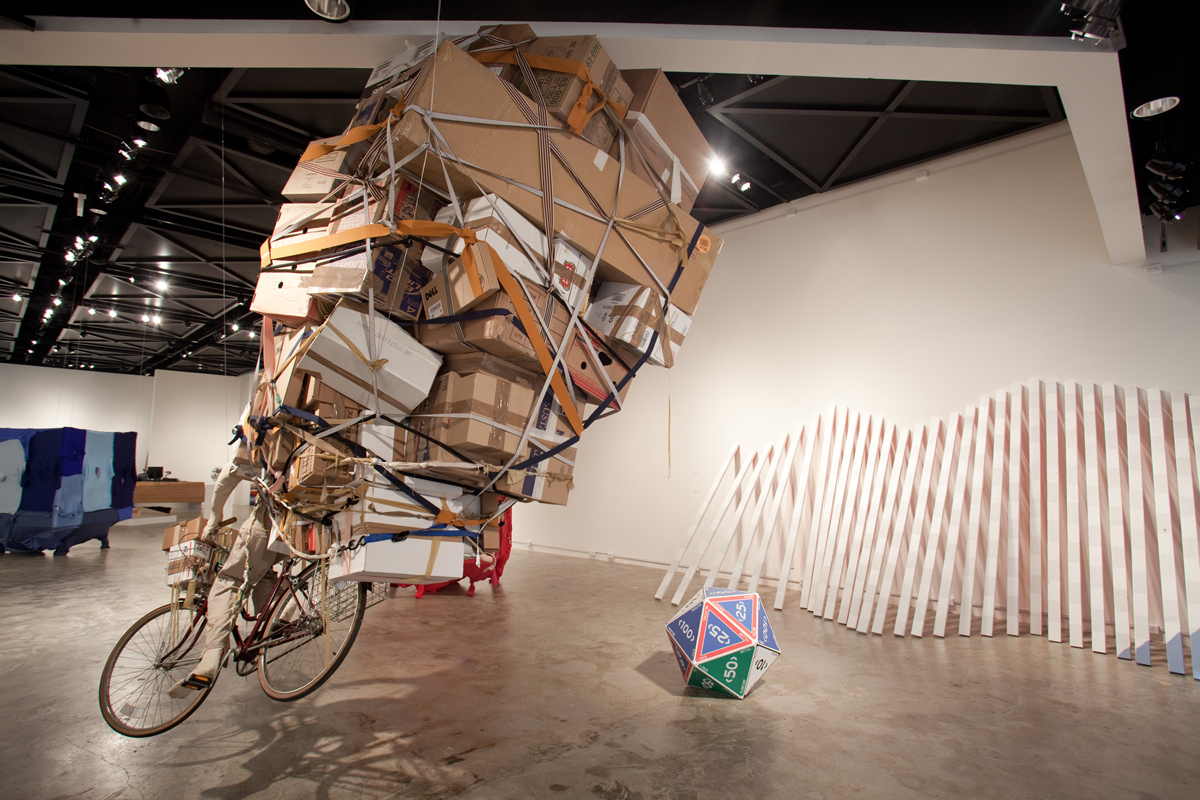
Installation view of "Contain, Maintain, Sustain" at Artisphere. Curated by Welmoed Laanstra, Sara Reisman and Ernesto Santalla. (Foreground work by Mary Mattingly.) Courtesy of WPA/Artistiphere.
JC: What about WPA's Public Art Residency (PAR) Program at Socrates Sculpture Park?
LG: Public Art has traditionally been one of those Catch-22 experiences: You can't get a commission unless you've had experience and you can't get experience without a commission. I started the Public Art Residency Program to give artists the opportunity to break out of that Catch-22 cycle and participate in the public art process.
JC: Can you discuss Patrick McDonough's work, the current PAR Socrates artist?
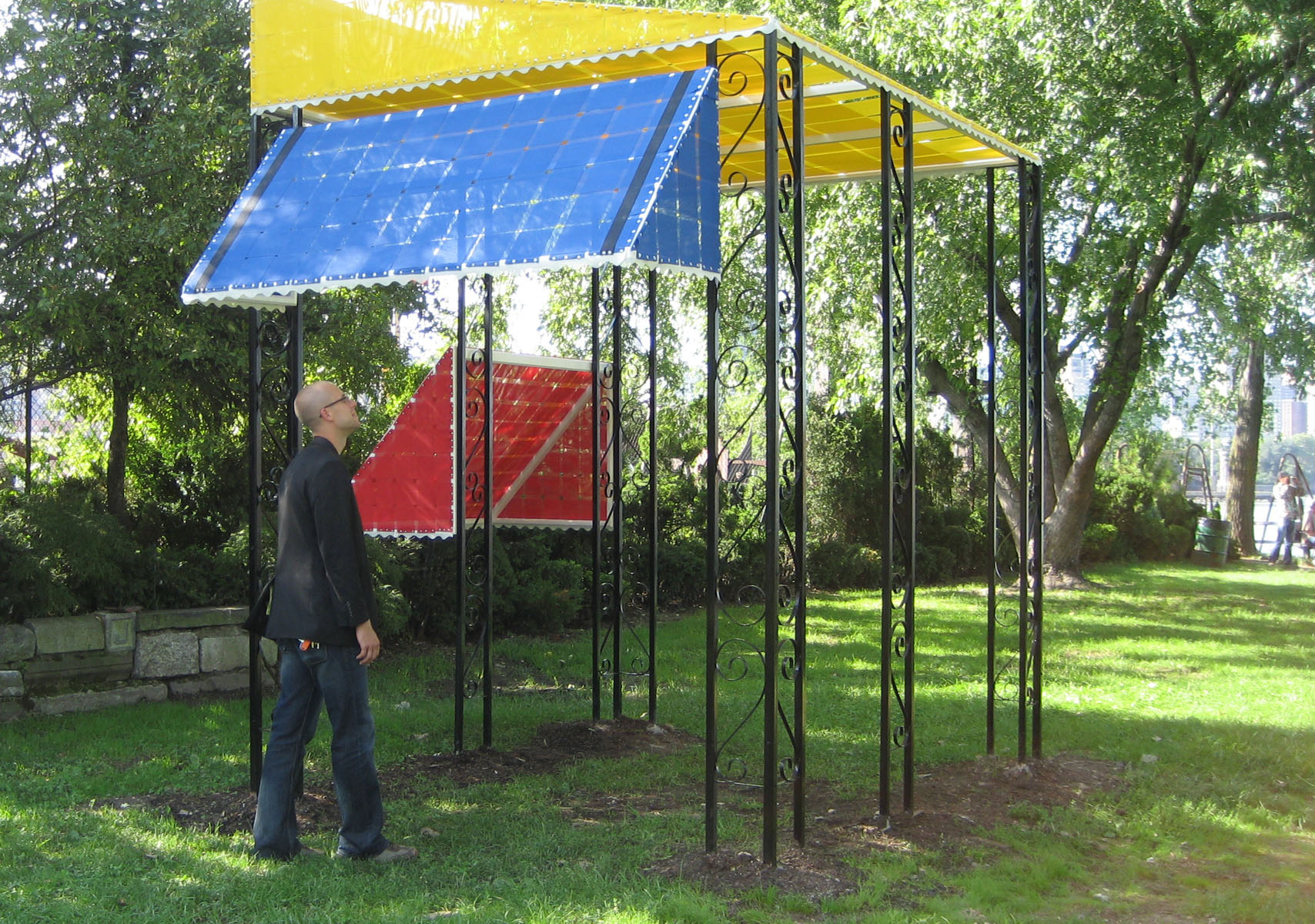
Patrick McDonough, Awning Studies: SOCRATES, 2011. Courtesy of WPA.
LG: Awning Studies: SOCRATES is the latest iteration of McDonough's Awning Studies project which investigates the tradition of domestic architectural adornment in the northeastern United States. By removing the overt functionality of the awning form, the artist emphasizes the secondary use value of the awning: as descriptor of free time space, branding of individual residences, and markers of the interstitial space between in interior/exterior or private/public.
JC: You're at every art event; you're so supportive of the D.C. arts community. D.C. is lucky to have you!
LG: You're very sweet to say that, but I think I'm really fortunate to have been given this opportunity. I try new things all the time and people don't want to stop me. It's amazing!
JC: Is this how SynchroSwim, your first project at WPA, happened?
LG: When I first got here, Mera Rubell offered to let WPA use the Capitol Skyline Hotel for programming. She didn't put any conditions on it. So I figured I'd do something unexpected and make use of one of the hotels best assets -- the pool. I had the idea to organize a synchronized swimming performance art competition. It was amazing. The place was packed and we had some interesting performances. Later, one of my board members told me he thought I was crazy, but they loved the event and couldn't have been happier with the way it turned out.
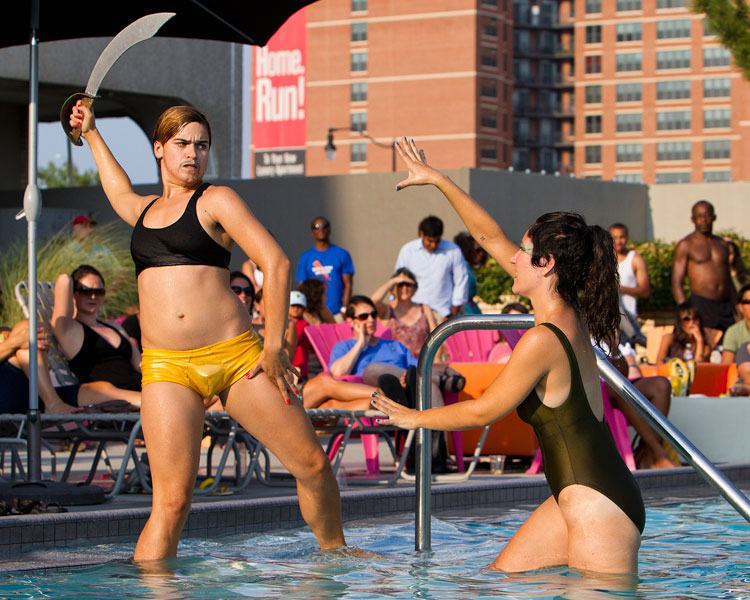
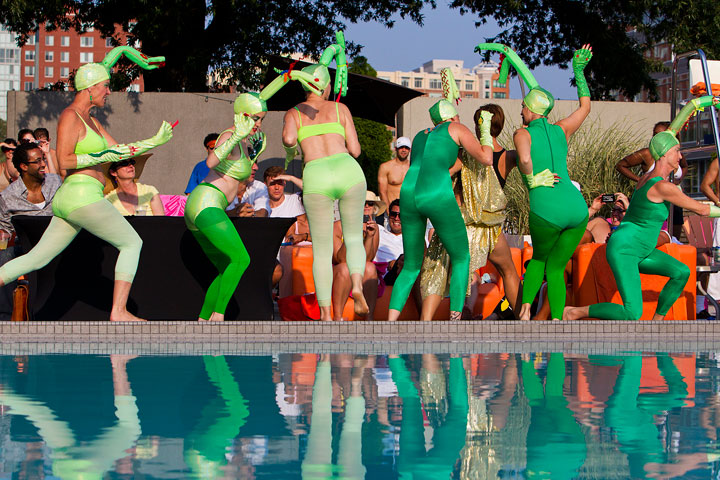 Baltimore's Fluid Movement performs Jason and the Aquanauts, WPA SynchroSwim 2010. Photos: Max Cook.
Baltimore's Fluid Movement performs Jason and the Aquanauts, WPA SynchroSwim 2010. Photos: Max Cook.
JC: What is the D.C. arts community like, compared to New York?
LG: The community here is very welcoming. I love it. Again, I feel incredibly fortunate to have been taken in with open arms. I love the support here and the role that WPA plays as a connector.
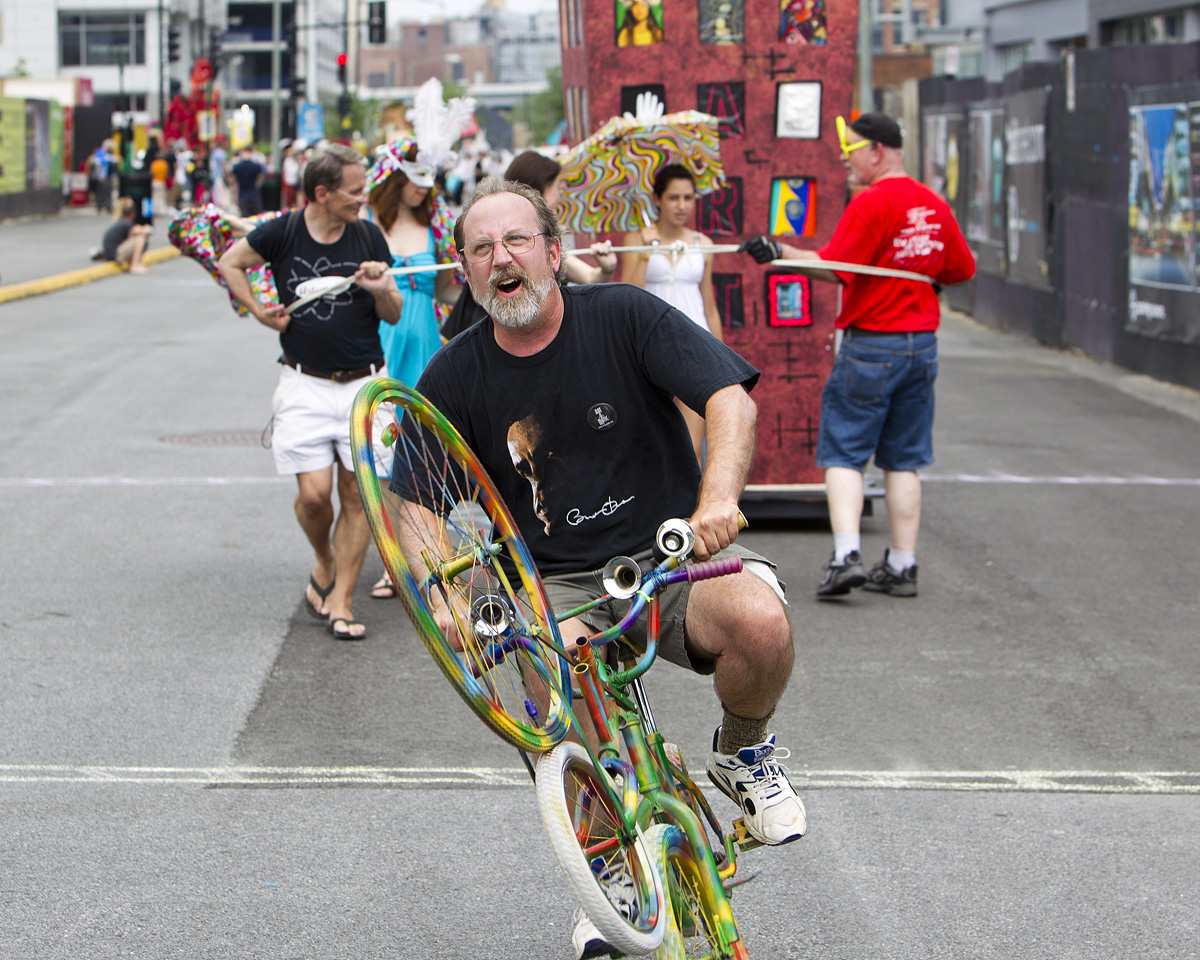
Artomatic at the WPArade, 2010. Photo: Max Cook.
Currently on view: "SELECT" (2/15/12 - 3/2/12) at 1800 L St NW in Washington, DC. http://wpadc.org/.
WPA Art Auction Gala: Saturday, March 3, 2012, 6:00-MIDNIGHT. http://auction.wpadc.org/
This post is a part of a series I am informally calling "The Cultural Landscape Architects." They are art world professionals who play a role in connecting art with the public. They decide which artworks by which artists are presented, place the art in the contexts of both art history and current times, and help shape the cultural landscape.